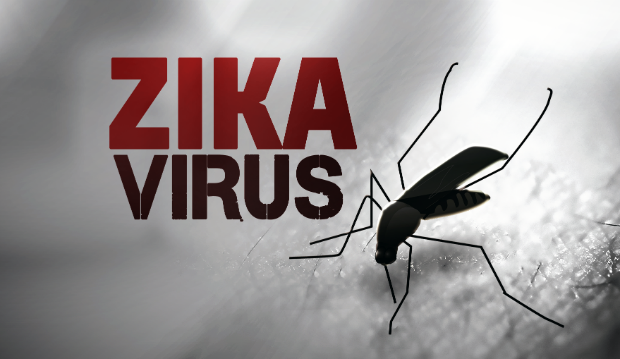Zika virus (ZIKV) disease had been described as a mild, self-limiting illness associated with fever, rash, joint pain, and conjunctivitis.
However, during the outbreak in French Polynesia, 42 patients with ZIKV disease were found to have the Guillain–Barré syndrome, which represented a marked increase from the approximately 5 cases detected annually during the previous 4 years. A connection with the Guillain–Barré syndrome had previously been described in association with other flavivirus illnesses but not with ZIKV infection.
From April 1, 2015, to March 31, 2016, a total of 164,237 confirmed and suspected cases of ZIKV disease and 1474 cases of the Guillain–Barré syndrome were reported in Bahia, Brazil; Colombia; the Dominican Republic; El Salvador; Honduras; Suriname; and Venezuela. To examine the temporal association between ZIKV disease and the Guillain–Barré syndrome, graphical and time-series analyses were applied to these two independent data sets, which were collected through official International Health Regulations channels or from ministry of health websites .
The data obtained from country reports contained no personally identifiable information and were collected as part of routine public health surveillance; therefore, the analysis was exempt from review by an ethics board. Differences between the observed and expected numbers of cases of the Guillain–Barré syndrome during the ZIKV transmission period, as well as differences in the incidence of the Guillain–Barré syndrome and ZIKV disease according to age and sex, were analyzed with the use of Poisson regression models .
The analysis suggests that changes in the reported incidence of ZIKV disease during 2015 and early 2016 were closely associated with changes in the incidence of the Guillain–Barré syndrome. During the weeks of ZIKV transmission, there were significant increases in the incidence of the Guillain–Barré syndrome, as compared with the pre-ZIKV baseline incidence, in Bahia State (an increase of 172%), Colombia (211%), the Dominican Republic (150%), El Salvador (100%), Honduras (144%), Suriname (400%), and Venezuela (877%)

Expected and Observed Numbers of Cases of the Guillain–Barré Syndrome.). When the incidence of ZIKV disease increased, so did the incidence of the Guillain–Barré syndrome

Cases of Zika Virus (ZIKV) Disease and the Guillain–Barré Syndrome (GBS).). In the six countries that also reported decreases in the incidence of ZIKV disease, the incidence of the Guillain–Barré syndrome also declined. When the seven epidemics of ZIKV disease are aligned according to week of peak incidence, the total number of cases of ZIKV disease and the Guillain–Barré syndrome are closely coincident), although the period from acquiring infection to reporting disease is approximately 2 weeks longer for ZIKV than for the Guillain–Barré syndrome, a pattern that is especially visible in data from Colombia and Venezuela. Whether the 2-week difference can be explained in terms of incubation periods or reporting delays is not yet known. We explored the potential effect of dengue virus circulation on the incidence of the Guillain–Barré syndrome and found no link .
In any event, we infer from these two series of cases, which were collected independently of each other, that ZIKV infection and the Guillain–Barré syndrome are strongly associated. Additional studies are needed to show that ZIKV infection is a cause of the Guillain–Barré syndrome.
Overall, females had a 75% higher reported incidence rate of ZIKV disease than did males (rate ratio, 1.75; 95% confidence interval [CI], 1.71 to 1.79); the rate was especially high among women 20 to 49 years of age.
This difference was also observed in the Yap Island (Micronesia) epidemic and could be due to greater exposure to the intradomiciliary mosquito vector, to more severe symptoms among women in this age group, to active health care–seeking behavior by females, or to enhanced reporting by health workers, given the risk of infection during pregnancy. However, the greater apparent risk of ZIKV disease among women 20 to 49 years of age was not matched by a similarly higher incidence of the Guillain–Barré syndrome, which may indicate an age and sex bias in the reporting of ZIKV disease. The reported incidence of the Guillain–Barré syndrome was 28% higher among males than among females (rate ratio, 1.28; 95% CI, 1.09 to 1.50) and consistently increased with age, findings that are in line with previous reports.
Approximately 500 million people in Latin America and the Caribbean are at risk for ZIKV infection, because they live in areas that are less than 2000 m above sea level where competent aedes vectors also are found. It is clear that increases in the incidence of the Guillain–Barré syndrome to a level that is 2.0 and 9.8 times as high as baseline, as we have reported here, impose a substantial burden on populations and health services in this region. Reports of the Guillain–Barré syndrome could serve as a sentinel for ZIKV disease and other neurologic disorders linked to ZIKV, including microcephaly.
This letter was published on August 31, 2016, at NEJM.org.

